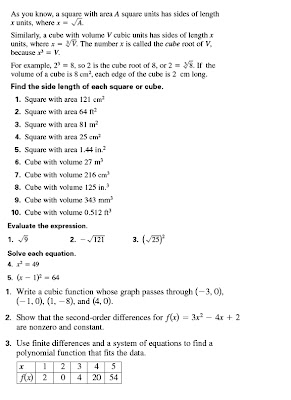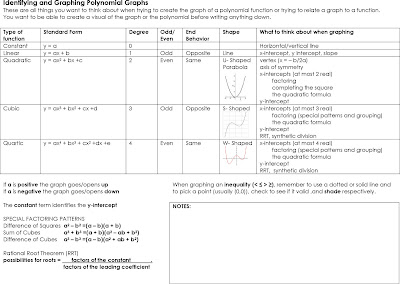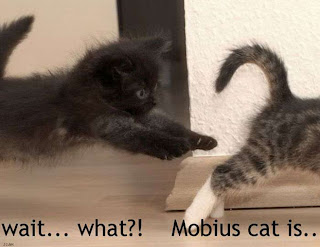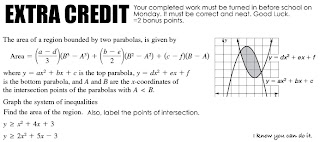Search for a specific topic
by typing a keyword in the blog search at the top.
May 20, 2008
fibonacci schmibonacci

The pattern of numbers shown in the picture above has been studied for over 2,000 years by people all over the world. They are invaluable in the mathematical field of combinatorics, which is a fancy way of saying counting things. They are called the binomial coefficients because they are the numbers multiplying terms of the expansion of the binomial (a+b)n, which is a cornerstone of the study of algebra. The patterns and inter-relationships among the numbers fascinated people in ancient times, and are still essential today to the study of fields as modern as computer science.
May 15, 2008
The Preakness Stakes
The Preakness Stakes is an American Grade I stakes race 1-3/16 mile thoroughbred horse race for three-year-old horses, held on the third Saturday in May each year at Pimlico Race Course in Baltimore, Maryland. Colts and geldings carry 126 pounds; fillies 121 lbs.
The Preakness Stakes has been termed "The Run for the Black-Eyed Susans" because a horseshoe of black-eyed susans, the state flower of Maryland, is traditionally placed around the winner's neck. The Preakness is the second leg in American thoroughbred racing's Triple Crown and almost always attracts the Kentucky Derby winner, some of the other horses that ran in the Derby, and often a few horses that did not start in the Derby. The Preakness is 1 3/16 miles or about 9 furlongs, compared to the Kentucky Derby (10 furlongs) and the Belmont (12). It is followed by the third leg, the Belmont Stakes.

The Preakness Stakes has been termed "The Run for the Black-Eyed Susans" because a horseshoe of black-eyed susans, the state flower of Maryland, is traditionally placed around the winner's neck. The Preakness is the second leg in American thoroughbred racing's Triple Crown and almost always attracts the Kentucky Derby winner, some of the other horses that ran in the Derby, and often a few horses that did not start in the Derby. The Preakness is 1 3/16 miles or about 9 furlongs, compared to the Kentucky Derby (10 furlongs) and the Belmont (12). It is followed by the third leg, the Belmont Stakes.

May 10, 2008
Images of Conic Sections

You can even create a similar model at home using a portion of a cone that you probably have just lying around... a styrafoam cup!

Conic Sections History
Apollonius of Perga (about 262-200 B.C.) was the last of the great mathematicians of the golden age of Greek mathematics. Apollonius, known as "the great geometer," arrived at the properties of the conic sections purely by geometry. His descriptions were so complete that he would have had little to learn about conic sections from our modern analytical geometry except for the improved modern notation. He did not, however, describe the properties of conic sections algebraically as we do today.
Apollonius defined the conic sections as sections of a cone standing on a circular base. The cone did not have to be a right cone, but could be slanted, or oblique. Apollonius noticed that all sections cut through such a cone parallel to its base were circles. He then extended the properties that he observed from these circles to ellipses and the other conic sections. He even solved the difficult problem of finding the shortest and longest distances from a given point to a conic section. These distances lie on lines called normals, which cut the curve of a conic section at right angles.
It is fortunate that scientists like Johannes Kepler, who lived many centuries later, had the principles of conic sections discovered purely mathematically by Apollonius and others to aid them in their work. This enabled them to realize the connections between mathematics and the natural world. It was Isaac Newton who first fully identified the connection between conic sections and the movement of celestial bodies, such as planets and comets. He was able to show that if the gravitational attraction between the sun and the celestial bodies varies inversely as the square of the distance between them, then the shapes of the orbits will be conic sections, as had been observed by Kepler and others.

May 1, 2008
Combinations and Permutations
Kentucky Derby link
personally i am betting on
1st Big Truck
2nd Z Fortune
3rd Visonaire
How many different combinations of winners are there?
How is a permutation different from a combination?
How many different combinations are there for a mixed up Rubik's Cube?
Rubik's Games online here
Or check out this guy solving different Rubik's puzzles.
Rubik's Cube is a mechanical puzzle invented in 1974 by Hungarian sculptor and professor of architecture Ernő Rubik. Originally called the "Magic Cube" by its inventor, this puzzle was renamed "Rubik's Cube" by Ideal Toys in 1980 and also won the 1980 German Game of the Year (Spiel des Jahres) special award for Best Puzzle. It is said to be the world's best-selling toy, with over 300,000,000 Rubik's Cubes and imitations sold worldwide. In a typical Cube, each face is covered by nine stickers of one of six solid colours. When the puzzle is solved, each face of the Cube is a solid colour. The Cube celebrated its twenty-fifth anniversary in 2005, when a special edition Cube in a presentation box was released, featuring a sticker in the centre of the reflective face (which replaced the white face) with a "Rubik's Cube 1980-2005" logo.The puzzle comes in four widely available versions: the 2×2×2 (Pocket Cube, also Mini Cube, Junior Cube, or Ice Cube), the 3×3×3 standard cube, the 4×4×4 (Rubik's Revenge), and the 5×5×5 (Professor's Cube). Even larger sizes have been built and are to be launched in September of 2008.
April 26, 2008
THANK YOU!
Thank you all for such a wonderful semester! I learned a lot from all of you. I am looking forward to **hopefully** teaching at Hoggard next year. All of you cross your fingers for me. Thank you for being such wonderful students.

And remember...

April 25, 2008
9.2-9.3 Graphing Rational Functions Walkthrough
Graphing Rational Functions Walkthrough
This link will require you to *gasp* read, but I think they do a really good job of walking you through all of the steps required to graph a rational function.
This link will require you to *gasp* read, but I think they do a really good job of walking you through all of the steps required to graph a rational function.
If baseball players want to increase their averages, solving rational equations would tell them how many hits they needed. Do you think the size of a skydiver affects the fall? Rational expressions can be used to model how a skydiver’s size affects the falling speed. In 1530, the invention of the diving bell provided the first effective means of breathing underwater. Like many other diving devices, a diving bell uses air that is compressed by the pressure of the water. Because oxygen under high pressure (at extreme depths) can have toxic effects on the body, the percent of oxygen in the air must be adjusted. The recommended percent p of oxygen (by volume) in the air that a diver breathes is:
p=(660)/(d+33)
where d is the depth (in feet) at which the diver is working.
Question: At what depth is the recommended percent of oxygen 5%?
In 1873 the closed hard hat diving suit was invented.

p=(660)/(d+33)
where d is the depth (in feet) at which the diver is working.
Question: At what depth is the recommended percent of oxygen 5%?
In 1873 the closed hard hat diving suit was invented.

April 22, 2008
Carbon Footprint?
You shouldn't consider these suggestions lightly. Think about how many years you have left to live on this earth.Studies project that we only have about ten more years before we can stop the effects of global warming due to our constant creation of carbon dioxide. Small changes can have a much larger impact than you think, so be conscious and make smart earth friendly decisions.
Chapter 8 Test Practice
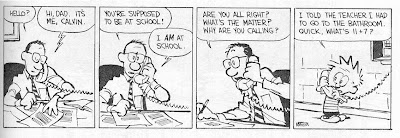
Also check one of the posts below for more links.
Come in in the morning if you have questions!
Good Luck studying. See you tomorrow.
April 17, 2008
Logarithm Help
Follow the link to go to an online application that you can work on for help. It gives you immediate feedback as soon as you choose your answer so it will keep you from doing a problem wrong. I advise that you try to do almost all of the problems WITHOUT a calculator first, as you will not necessarily have a calculator to solve these on your test for this chapter. Click here.
The same site also has problems including logarithms once you have solved one, you can click the following answer button to see a worked out solution that includes all of the steps. Click in this vicinity to link there.
Also
Here are the links to the lesson Quizzes from your book as ususal.
Section 8.4
Section 8.5
Do you like logs as much as this guy?

The same site also has problems including logarithms once you have solved one, you can click the following answer button to see a worked out solution that includes all of the steps. Click in this vicinity to link there.
Also
Here are the links to the lesson Quizzes from your book as ususal.
Section 8.4
Section 8.5
Do you like logs as much as this guy?

April 16, 2008
See, i told you logs were fun!
Can anyone tell me what show this is from?
Dying for more about LOGarithmS?
How about a log joke?
How about a log joke?
Q: How do we reduce an exponential growth of grass?
A: Using a "ln"-mower!
Way before calculators existed Logarithms were developed to reduce large numbers into smaller numbers, so that operations such as multiplication and division can be performed more efficiently. When translated literally from the Chinese language, logarithm means reduced number. The logarithmic form is another way of expressing the exponential form, this time in much smaller numbers. Logarithms were devised by John Napier in 1614.
April 15, 2008
Look at how it happens!
Oiler's Number, not the letter E

Leonhard Euler (pronounced oiler) was the most prolific mathematician of all time. He wrote more than 500 books and papers during his lifetime (about 800 pages per year) with an incredible 400 further publications appearing posthumously. His collected works and correspondence are still not completely published: they already fill over 70 large volumes, comprising tens of thousands of pages.
The number e is a famous irrational number, and is one of the most important numbers in mathematics.
The first few digits are:
2.7182818284590452353602874713527...
this is often called Euler's number after Leonhard Euler
April 10, 2008
April 4, 2008
Personally, I think you should spend your break making one of these.
They are called Rube Goldberg Machines.
Reuben Garret Lucius Goldberg (July 4, 1883 - December 7, 1970) was an American cartoonist who received a 1948 Pulitzer Prize for his political cartooning. He is best known for his series of popular cartoons depicting Rube Goldberg machines, complex devices that perform simple tasks in indirect, convoluted ways.
April 1, 2008
Algebra 2 Reference Guide
A collection of helpful Algebra II hints can be found, viewed and printed by clicking here.
You may not want it now, but it's going to be really helpful come exam time!
You may not want it now, but it's going to be really helpful come exam time!
Chapter 7 TEST
Section 7.4
Section 7.5
Section 7.6
CHAPTER 7 TEST
The Chapter 7 Test will be on Thursday April 3.
Use these links and the previous links for chapters 7.1-7.3 to help you study.
Please Note: Your test will not be multiple choice, and will NOT be calculator active
Section 7.5
Section 7.6
CHAPTER 7 TEST
The Chapter 7 Test will be on Thursday April 3.
Use these links and the previous links for chapters 7.1-7.3 to help you study.
Please Note: Your test will not be multiple choice, and will NOT be calculator active
QUIZ Friday- 7.1, 7.2, 7.3- Online Study Guide
Section 7.1
Section 7.2
Section 7.3
Click on any of these links to go to the respective online quiz that coincides with your text.
Section 7.2
Section 7.3
Click on any of these links to go to the respective online quiz that coincides with your text.
March 30, 2008
March 26, 2008
Totally Radical!

The word "radical" comes from the Latin word "radix", meaning "root", from which we get not only the word "radical", but also "radish"! Other English words related to “radix” are rutabaga, race, and eradicate.The other use of "radical" means "by the roots" or "from the roots", that is, complete, such as a "radical" change in a person. Another word from the same source is "eradicate" (originally, to "root out" or "pull out by the roots"). The word radix was used for the branches or roots of plants. Later it was generalized to mean origin or beginning. The radical symbol first appeared in 1525 in Die Coss by Christoff Rudolff (1499-1545). Christoff Rudolff wrote Coss (1525), the first book of algebra to appear in German.
In arithmetic the root of a number is the number that is used to build up another number by repeated multiplication. Since 8 = 2*2*2 we say that 2 is the third root of eight. The word root is also used in the mathematics of functions to indicate the value that will produce a zero (a ground level number) for the function. If f(x)= x2-9 then x=3 is one of the roots or zeros of the function. The same root word also gave us the word radical which is used for the symbol indicating a root. Students often call this the square root sign.
March 25, 2008
To let the truth be told
In an effort to assuage many of your fears, I would like to let you know that despite my concerns, the test grades were higher than expected. We had 4 100's in 3rd period, as well as quite a few more As and Bs in both classes.

see more crazy cat pics
So kudos to those of you who studied hard over the break, it was well evident.
If in the future you would be interested in having me post the high score board up here (As only) let me know. Likewise, if you are adverse, please also inform me by comment.
Remember, we have a quiz on Friday. 7.1-7.3.

see more crazy cat pics
March 24, 2008
Extra Work or Extra Credit?
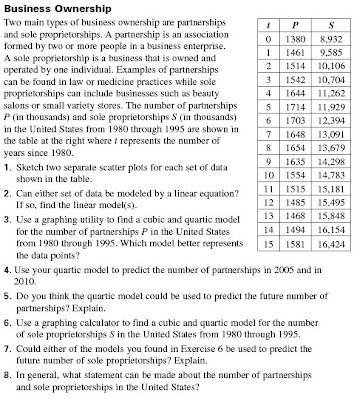
This will be due Tuesday morning before school. Please make sure you turn in all of your work.
Some of you may have tried to access this before but couldn't read it because it was too small.
Liz just left me a message regarding that and I have since reposted the assignment.
Just click on the picture and it should appear larger.
Good Luck.
Chapter 6 Test
The Chapter 6 Test will be on Tuesday when you come back from Easter Break. We will not have much time to review before hand so I recommend that you study over the break and come in on Tuesday morning with questions. If you would like extra help here is a link to test practice that coincides with Chapter 6 from your book.
Or, try here, there's even a game!
March 19, 2008
Roots Rock Radical! (Special Number Chart)

Square roots are something we have been dealing with a lot. Now come the cube, fourth and fifth roots.... Being able to recognize special numbers quickly will be a skill you should like to have. Here is a sheet with a table of different "special" values. Download it if you'd like. Click on it to make it larger.
March 18, 2008
March 14, 2008
March 13, 2008
VIDEO LESSON-Writing an equation from zeros-CH 6.7
make sure to click the button to view it as a full screen!
March 12, 2008
March 8, 2008
March 7, 2008
Synthetic Substitution.... leads to SYNTHETIC DIVISION.
In mathematics, Ruffini's rule allows the rapid division of any polynomial by a binomial of the form x − r. It was described by Paolo Ruffini in 1809. Ruffini's rule is a special case of long division when the divisor is a linear factor. Ruffini's rule is also known as synthetic division.

March 6, 2008
Science and Engineering are almost as cool as math.
Watch the Solid Rocket Boosters detach at 2 minutes and 25 seconds.
Extra Credit or Not
Mr. Jupena and I have decided that instead of giving you some Chapter 5 extra credit, we will be giving a second Chapter 5 test. (Date to be announced, but before the midterm.) The grade issue is still up in the air. We are not sure if we will average the two grades, replace the grade or use the test to supplement the standing grade, but regardless of the choice we make, this decision will only serve to benefit you.
Now, do some math.
March 4, 2008
March 2, 2008
ViDEO LESSON- Properties of Exponents - CH 6.1
make sure you choose the option to view the video full screen.
February 29, 2008
Topology for Mr. Freedland
Doughnut shaped graphs appear in a branch of mathematics called topology. It is a class that is generally offered at a graduate level. That means after you graduate from college with your bachelors degree and decide to go back and get a masters in mathematics. If you want to learn more about topology then AWESOME, but I'd advise you to fine tune your algebra skills first.;)
Click here to find out more about Topology
VIDEO LESSON- Imaginary Numbers - CH 5.4
make sure you select the full screen option.
also, you can watch it slower or faster by pausing the video and dragging the play bar...
Subscribe to:
Posts (Atom)




